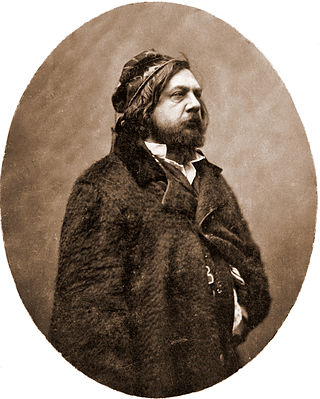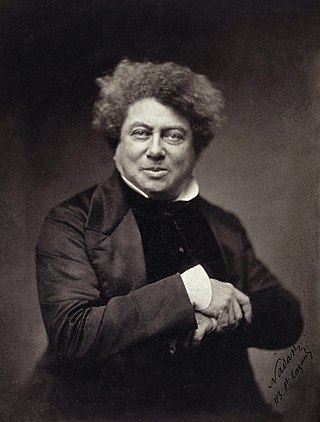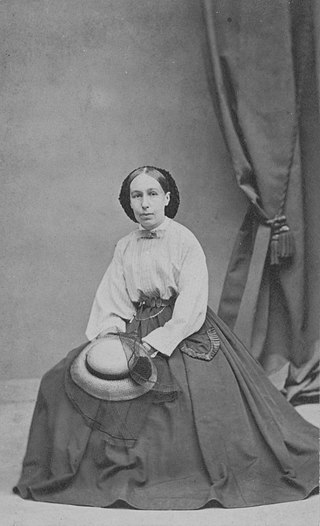Edward Sherman Gould | |
|---|---|
 | |
| Born | 11 May 1808 |
| Died | 21 February 1885 |
| Occupation | Writer |
Edward Sherman Gould (11 May 1808 Litchfield, Connecticut - 21 February 1885 New York City) was a nineteenth-century United States author and critic.
Edward Sherman Gould | |
|---|---|
 | |
| Born | 11 May 1808 |
| Died | 21 February 1885 |
| Occupation | Writer |
Edward Sherman Gould (11 May 1808 Litchfield, Connecticut - 21 February 1885 New York City) was a nineteenth-century United States author and critic.
He was the son of jurist James Gould, and an early contributor of tales to the Knickerbocker Magazine, to the New World, the Mirror, The Literary World, and other journals. His signature of "Cassio" in Charles King's American was at one time well-known.
In 1830 he lectured before the New York Mercantile Library Association on "American Criticism in American Literature". In his talk, he opposed the prevalent spirit of overflowing praise as injurious to the interests of the country.
His examination of correct use of English is the subject of several of his books, such as, Good English, or Popular Errors in Language (1867). At the time, there was great interest among many Victorian authors about the Germanic origin, evolution, and proper use of English, [1] among criticism that continues into contemporary times.
Translations:
In addition to contributing to many literary and theological journals, he wrote:

Honoré de Balzac was a French novelist and playwright. The novel sequence La Comédie humaine, which presents a panorama of post-Napoleonic French life, is generally viewed as his magnum opus.

Pierre Jules Théophile Gautier was a French poet, dramatist, novelist, journalist, and art and literary critic.

Alexandre Dumas, also known as Alexandre Dumas père, was a French novelist and playwright.

Gérard de Nerval was the pen name of the French writer, poet, and translator Gérard Labrunie, a major figure of French romanticism, best known for his novellas and poems, especially the collection Les Filles du feu, which included the novella Sylvie and the poem "El Desdichado". Through his translations, Nerval played a major role in introducing French readers to the works of German Romantic authors, including Klopstock, Schiller, Bürger and Goethe. His later work merged poetry and journalism in a fictional context and influenced Marcel Proust. His last novella, Aurélia, influenced André Breton and Surrealism.

Henry Wheaton was a United States lawyer, jurist and diplomat. He was the third reporter of decisions for the United States Supreme Court, the first U.S. minister to Denmark, and the second U.S. minister to Prussia.

Passy is an area of Paris, France, located in the 16th arrondissement, on the Right Bank. It is adjacent to Auteuil to the southwest, and Chaillot to the northeast.

Jean Ignace Isidore Gerard was a 19th century French illustrator and caricaturist who published under the pseudonym of Grandville. He has been called "the first star of French caricature's great age", and Grandville’s book illustrations described as featuring "elements of the symbolic, dreamlike, and incongruous, and they retain a sense of social commentary." "His perverse vision sought the monster in everyone and took delight in the strangest and most pernicious transfigurement of the human shape ever produced by the Romantic imagination." The anthropomorphic vegetables and zoomorphic figures that populated his cartoons anticipated and influenced the work of generations of cartoonists and illustrators from John Tenniel, to Gustave Doré, to Félicien Rops, and Walt Disney. He has also been called a "proto-surrealist" and was greatly admired by André Breton and others in the movement.
The Knight of Sainte-Hermine is an unfinished historical novel by Alexandre Dumas, believed to be Dumas' last major work. The novel was lost until the late twentieth century. Dumas scholar Claude Schopp found an almost-complete copy in the form of a newspaper serial. A number of Dumas' previously forgotten works have been found, but this novel is the largest and most complete at 900 pages.

La Comédie humaine is Honoré de Balzac's 1829–48 multi-volume collection of interlinked novels and stories depicting French society in the period of the Restoration (1815–30) and the July Monarchy (1830–48).

The Mysteries of Paris is a novel by the French writer Eugène Sue. It was published serially in 90 parts in Journal des débats from 19 June 1842 until 15 October 1843, making it one of the first serial novels published in France. It was an instant success and singlehandedly increased the circulation of Journal des débats. It founded the "city mysteries" genre, spawning many imitations.

Illusions perdues — in English, Lost Illusions — is a serial novel written by the French writer Honoré de Balzac between 1837 and 1843. It consists of three parts, starting in provincial France, thereafter moving to Paris, and finally returning to the provinces. The book resembles another of Balzac's greatest novels, La Rabouilleuse, that is set in Paris and in the provinces. It forms part of the Scènes de la vie de province in La Comédie humaine.
Literature of the 19th century refers to world literature produced during the 19th century. The range of years is, for the purpose of this article, literature written from (roughly) 1799 to 1900. Many of the developments in literature in this period parallel changes in the visual arts and other aspects of 19th-century culture.

Auguste Maquet was a French author, best known as the chief collaborator of French novelist Alexandre Dumas, père, co-writing such works as The Count of Monte Cristo and The Three Musketeers.
Louis Candide Boulanger was a French Romantic painter, pastellist, lithographer and a poet, known for his religious and allegorical subjects, portraits, genre scenes.

The Maison de Balzac is a writer's house museum in the former residence of French novelist Honoré de Balzac (1799–1850). It is located in the 16th arrondissement at 47, rue Raynouard, Paris, France, and open daily except Mondays and holidays; admission to the house is free, but a fee is charged for its temporary exhibitions. The nearest métro and RER stations are Passy and Avenue du Président Kennedy.

Ursule Mirouët, a novel, belongs to Honoré de Balzac’s series of 94 novels and short stories La Comédie humaine. First published in 1841, it forms part of his Scènes de la vie de province.

Katherine Prescott Wormeley was an American nurse in the Civil War, author, editor, and translator of French language literary works. Her first name is frequently spelled as "Katharine".
Zheng Yonghui was a Chinese writer and translator who won the Lu Xun Literary Prize, a prestigious literature award in China.

Jacques-Germain Chaudes-Aigues was a French journalist and writer.
The style of architecture and design under King Louis Philippe I (1830–1848) was a more eclectic development of French neoclassicism, incorporating elements of neo-Gothic and other styles. It was the first French decorative style imposed not by royalty, but by the tastes of the growing French upper class. In painting, neoclassicism and romanticism contended to become the dominant style. In literature and music, France had a golden age, as the home of Frédéric Chopin, Franz Liszt, Victor Hugo, Honoré de Balzac, and other major poets and artists.